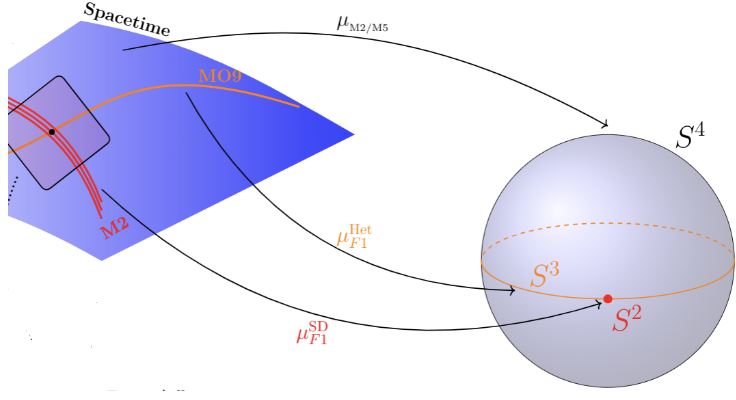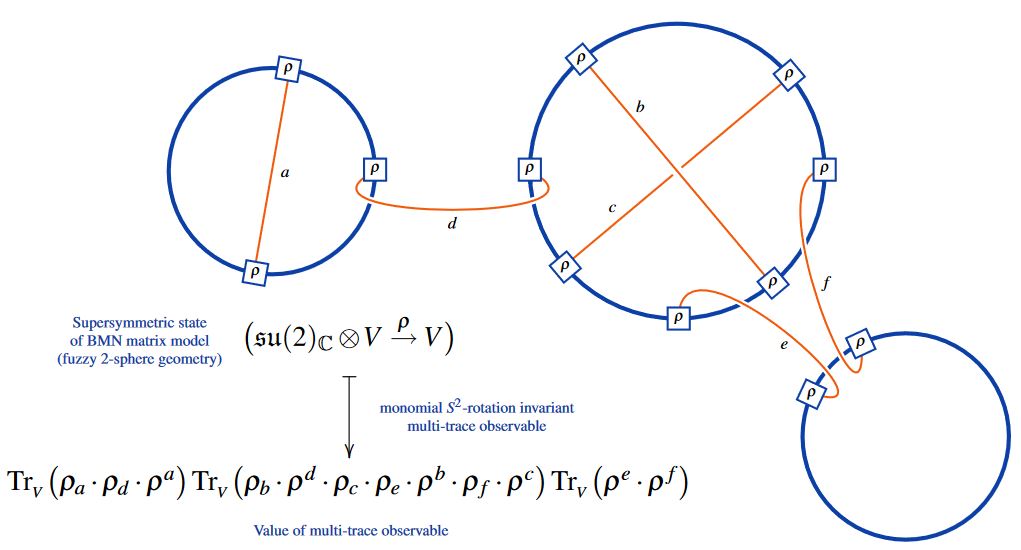Schreiber Some Quantum States of M-Branes under Hypothesis H
A talk that I have given:
-
Urs Schreiber on joint work with Hisham Sati:
Some Quantum States of M-Branes under Hypothesis H
talk at
Centre for Research in String Theory
Queen Mary University of London
Dec 9, 2021
download:

Abstract: Following a proposal by H. Sati, we have recently stated a hypothesis about the mathematical home of the quantum charges in M-theory. This “Hypothesis H” refines the traditional proposal for quantization of D-brane charge from K-theory to the non-abelian cohomology theory known as 4-Cohomotopy, whose classifying space is the 4-sphere.
Besides its motivation from homotopy-theoretic re-analysis of 11d supergravity and of the old brane scan, Hypothesis H is currently justified by its rigorous implication of a list of long-conjectured M-theoretic consistency conditions on C-field flux and M-brane charges – such as shifted C-field flux quantization, dual Page charge quantization and M2/M5-brane tadpole cancellation.

But if Hypothesis H is a correct assumption about the nature of M-theory, this suggests that quantum states of full M-theory should be reflected in the positive cohomology of the moduli space of Cohomotopy cocycles, much like quantum states of non-perturbative Chern-Simons theory are in the Dolbeault cohomology of moduli spaces of (flat) connections.

In this talk I discuss how, in the topological sector of -brane intersections, such quantum states according to Hypothesis H are identified with weight systems on horizontal chord diagrams, and how these do reflect a range of phenomena expected from the traditional approaches to understanding these brane intersections, such as non-abelian DBI-theory, the BMN matrix model, Rozansky-Witten theory and Hanany-Witten theory.
Specifically, we have proven that the fundamental -weight system satisfies the positivity condition that characterizes physical (i.e. non-ghost) quantum states. Under the above identification, this quantum state corresponds to an elementary fuzzy funnel configuration and to the elementary transverse M5-brane state in the BMN matrix model – both as expected for D6/D8-brane intersections.

Besides possible implications for the elusive formulation of M-theory, this result may provide a unifying explanation for the plethora of unexpected appearances that chord diagrams are recently making in fundamental high energy physics, notably in discussion of holographic entanglement entropy.
Based on:
-
Differential Cohomotopy implies intersecting brane observables
-
David Corfield, Hisham Sati, Urs Schreiber:
Related talks:
-
Proper Orbifold Cohomotopy for M-Theory
talk at String and M-Theory: The New Geometry of the 21st Century – II
via NUS Singapore, 2021
-
Microscopic Brane Physics from Cohomotopy
talk at M-Theory and Mathematics
NYU Abu Dhabi, 2020
For more see:
Last revised on December 31, 2021 at 12:04:35. See the history of this page for a list of all contributions to it.